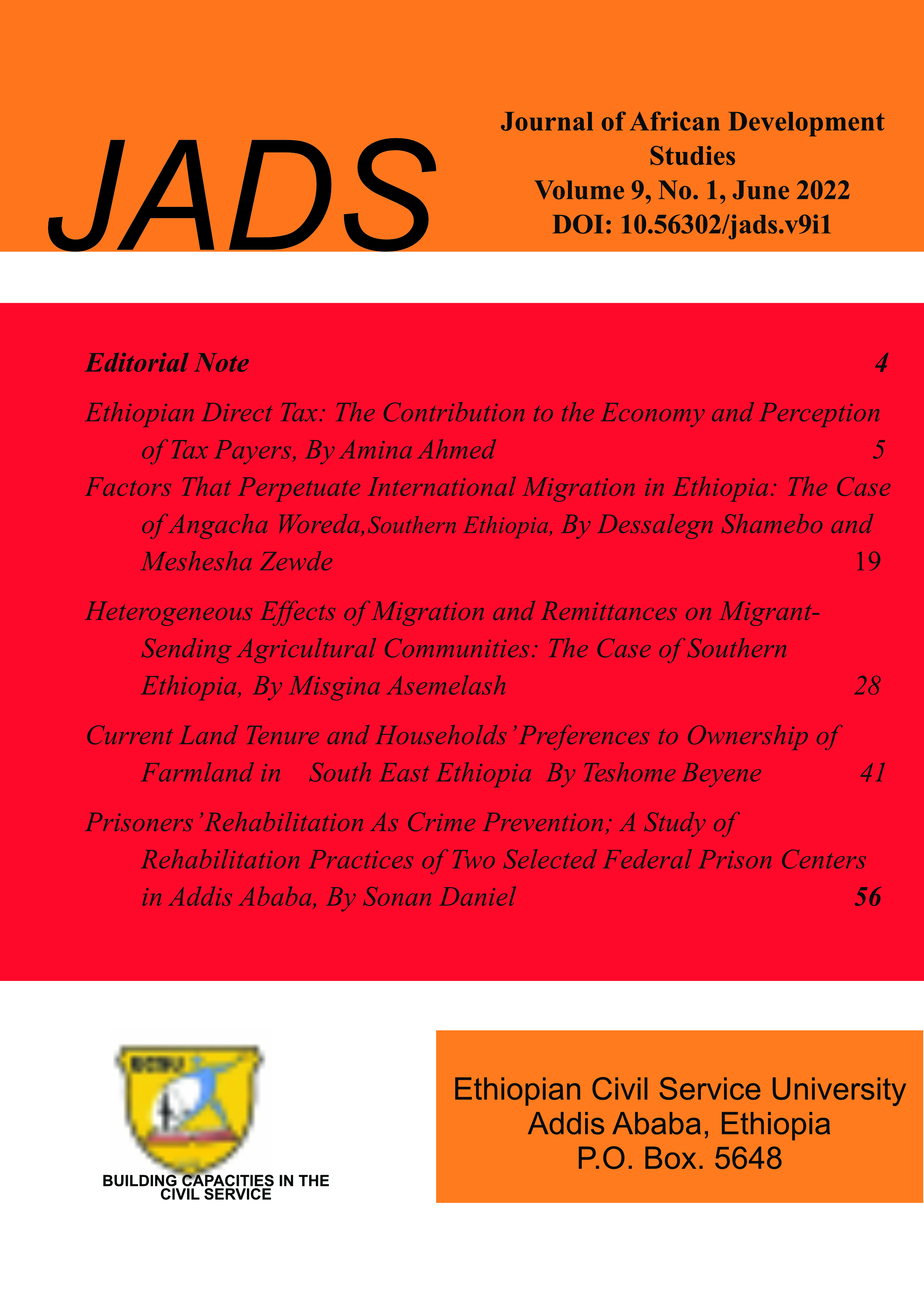Prisoners’ Rehabilitation as Crime Prevention: The Tale of two Prison Centers in Addis Ababa
DOI:
https://doi.org/10.56302/jads.v9i1.8287Keywords:
Recidivism, Juvenile, Prison Center, Rehabilitative, PunishmentAbstract
Concentrating on the rehabilitation of inmates throughout the world has demonstrated positive results in breaking the cycle of recidivism. Objective; this study aimed to evaluate the rehabilitation practices of the Center for Children in Contact with Crime and Kality correctional institutions and their implications for recidivism prevention. Self- administered questionnaires were utilized to collect quantitative data from 360 convicts. In-depth interviews were conducted with 4 social workers and psychologists. To evaluate the numerical data, descriptive-analytical approaches were applied. The results were presented using graphs, pie charts, and tables, while the qualitative results were analyzed using thematic analysis techniques. The results show that the studied prison centers have their rehabilitation strategies. This includes involving inmates in unions, one-on-one and group counseling, sport and recreation, and vocational training, however, they are not provided based on the inmates' perceived requirements. It may be concluded that rehabilitation procedures in each detention institution are in their early stages. Despite the best efforts of the prison facilities, the study results demonstrate that adopting prisoner rehabilitation as a crime prevention approach still has a long way to go
Downloads
Published
How to Cite
Issue
Section
License
Copyright (c) 2023 Journal of African Development Studies

This work is licensed under a Creative Commons Attribution-NonCommercial-ShareAlike 4.0 International License.





